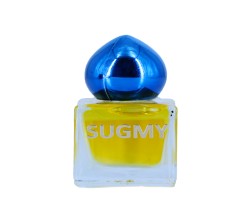A Brief History About the Origin of Attar:
Attar or It has its etymology in Arabic term meaning ˜scent'. There are many stories about the origin of attar and it dates back to as far as 5000 years old Indus Valley Civilization. Archaeological excavation finds of Indus Valley Civilization reveal certain round copper stills. A detailed study by archaeologists documents that these stills were used to make attar. These stills called Deg were carried around by attar makers to collect different flowers in full bloom. The petals of these flowers like Rose and Jasmine were used to prepare attar. Mughal Emperor Jahangir was one of the first patrons of attar who promoted production on an industrial scale. Emperor Jahangir's beloved wife Nur Jahan was very fond of attar and she used Rose Attar primarily while taking a bath. Attar distillation in India first took place in the sacred city of Kannauj. A legend goes by that ascetics or sadhus, who landed in Kannauj used to procure certain scented herbs which they used to light bonfires. The shepherds while grazing their cattle found that the smell lingered on even after the sadhus left the place. This led to the search of the herbs and finally, attars began to be produced in India itself.
How is Attar Extracted?
The method believed to be followed during the Indus Valley Civilization to prepare attar was quite simple. Dogs were used to hold the to water in which the petals of sweet-smelling flowers were added. As time passed by. the petals infused their scent into the water and itself dried up. The petals were removed from the concoction and what was left was fragrant Qatar.
Evolution in technology has made little effect on the procedure of extraction of attar. The traditional method called the ˜Deg and Bhapka' is still the most preferred because it helps the attar in retaining its medicinal qualities. ˜Deg' is the copper still and ˜Bhapka' means steam. In a way, it is the predecessor of the steam distillation method being followed today. In this method:
- The flowers are plucked in the early morning before sunrise by experienced farmers or collectors and they take them to the distillery nearby.
- At the distillery, flower petals are separated from the bud.
- The petals and water are poured into copper pots called Degs.
- The copper pot or Deg is then sealed using a mixture of clay and cotton.
- The Deg is connected by a bamboo pipe (referred to as Chonga) to a copper receiver (Bhapka) and a water tank.
- Once done, a fire is lit and the pot heated.
- After a few hours, the first distillate is condensed and the liquid is connected.
- The liquid is transferred to an empty copper pot and distilled again.
- In the 2nd distillation, the true attar is extracted.
Some Medicinal Benefits of Attar:
Attar when extracted through the process of Deg and Bhapka or Cold Press method, is said to be in the purest form. According to Ancient Ayurveda, the attar is said to contain amazing healing properties. Some of these are:
- Relief from headache and muscle tension.
- Relief from stomach-related problems.
- Has Anti-Inflammatory Properties.
- Immunity Enhancer.
- Relief from Insomnia.
- Instantly Uplifts Mood.
- Can be useful in motion sickness.



.jpg)





